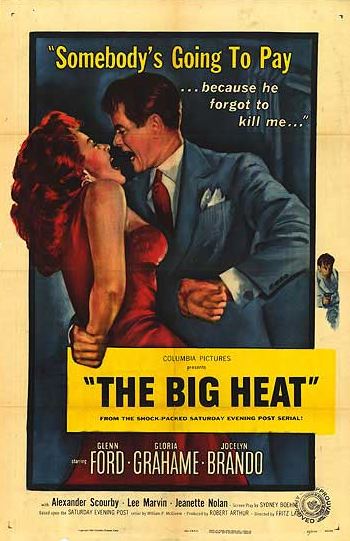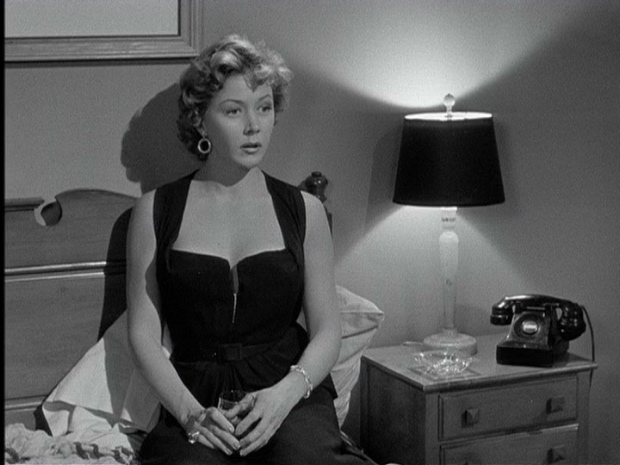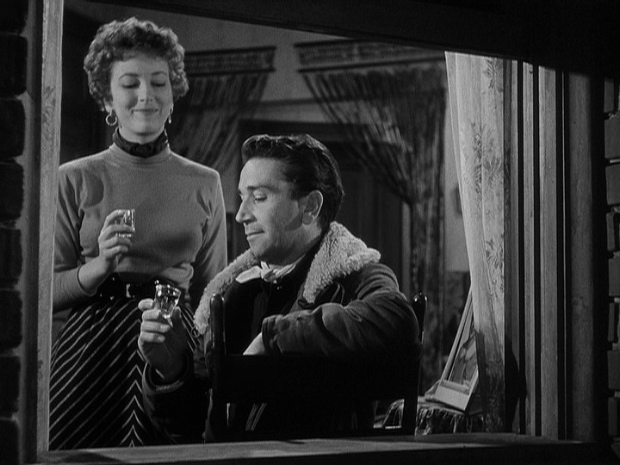
The following films are sometimes called films noirs, but I don’t think they really belong in the category:
They Drive By Night
High Sierra
The Asphalt Jungle
Key Largo
Railroaded
Shoot To Kill
The Big Heat
Tough Assignment
Illegal
Force Of Evil
These films are better appreciated as late-cycle variants of the 30s-era crime melodrama. They’re very specifically about the underworld of crime — they assume an overworld of decency and order. They allow us to participate vicariously in the transgressive behavior of often romanticized criminals, or to penetrate their world in the company of a righteous guide, a righter of wrongs. They don’t, like the true film noir, posit a world where everything seems to have gone horribly wrong.
Glenn Ford’s character in The Big Heat certainly has his dark night of the soul, when it looks as though his whole world has gone noir and that there’s no way out of it. But just at that moment his pals on the police force reassert their decency, a bunch of old army buddies rallies to protect his child, and all is set right in the end. Gloria Grahame’s character, the only person in the film besides Ford who seems to have any balls at all, dies heroically, defusing her challenge to the general collapse of manhood around her.

The idea of a city government in the grips of a corrupt political regime was a staple of the 30s-era crime drama. In The Big Heat this corruption has become virulent and all-pervasive, but in the end it’s just as thoroughly vanquished and dismantled as it routinely was in the 30s-era films. The Big Heat, like a lot of crime dramas that are identified as noir, flirts with the dark vision of the true noir but stops short of embracing it.

Compare They Drive By Night with Thieves’ Highway. Both are dramas about corruption in the trucking industry, both feature working-class protagonists who fight against this corruption. But on a psychic level the two films play out in entirely different universes. In
the earlier film, They Drive By Night, corruption is a social problem which courageous
proletarians can overcome. In the later film, protagonist Richard Conte is snared in a web he doesn’t understand and can’t get out of except with the help of a fallen woman. The center of the earlier film is struggle, the center of the later film is a mood of existential dread. It’s precisely in its sensitivity to this mood, in its atmosphere of moral ambiguity and bewilderment, that the true film noir separates itself from the Depression-era crime melodrama.
[The noir credentials of the films listed above are as follows: Railroaded is packaged in Kino’s film noir box set The Dark Side Of Hollywood . . . Shoot To Kill and Tough Assignment are packaged in VCI’s Forgotten Noir series . . . The Big Heat, The Asphalt Jungle and Key Largo are listed in Nicholas Christopher’s filmography of noir in his book Somewhere In the Night . . . High Sierra is listed as a notable film noir in the Wikipedia entry on the subject . . . They Drive By Night, though usually discussed as a proto-film noir, is occasionally identified as a full-fledged noir on web sites and in DVD catalogue listings. I would argue that none of these films diverges significantly, fundamentally, from the
30s-era crime drama tradition out of which they emerge — certainly not enough to require placing them in a new category all their own, like film noir, even when they’re inflected here and there with a noirish style and tone.]
